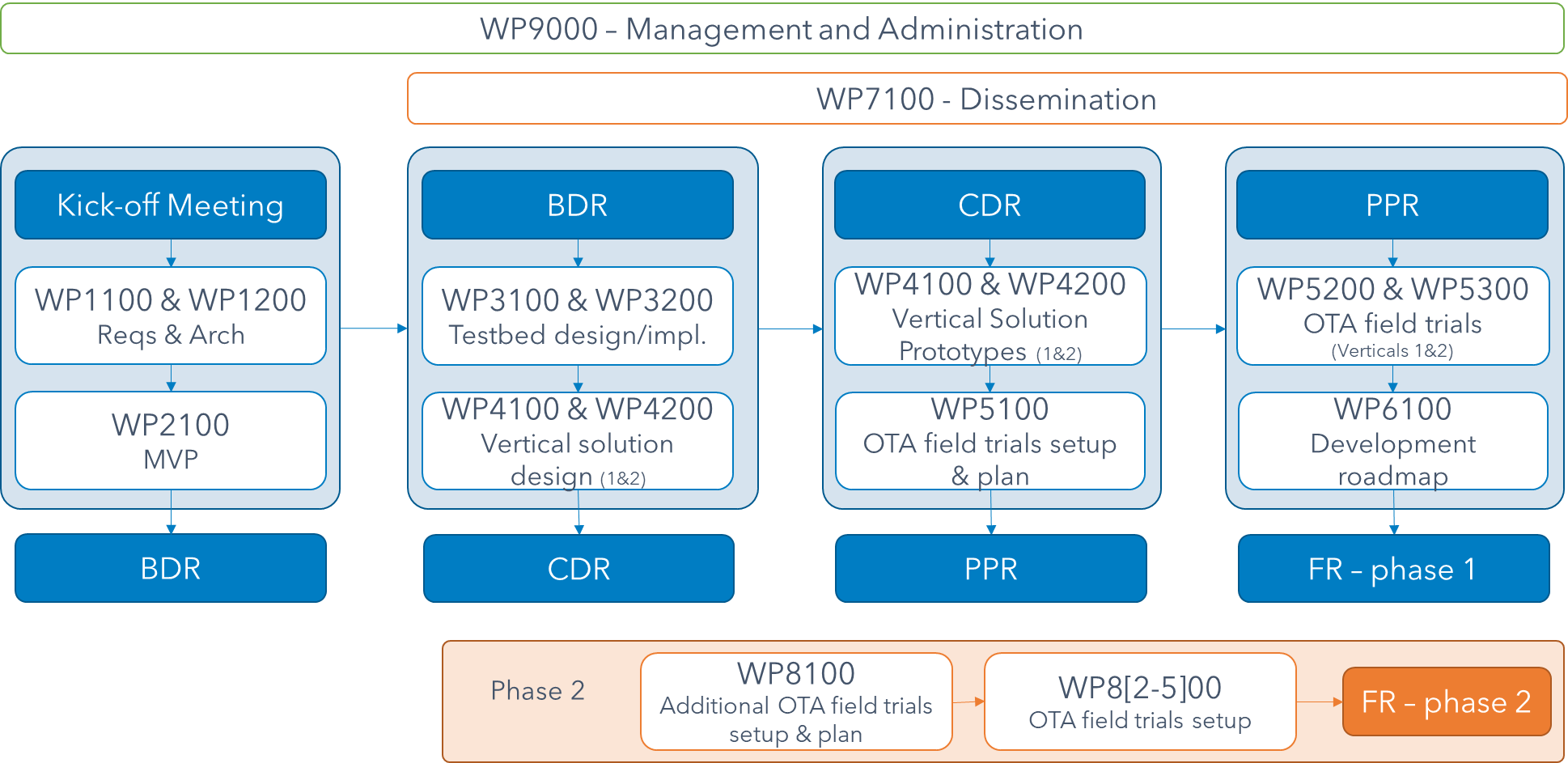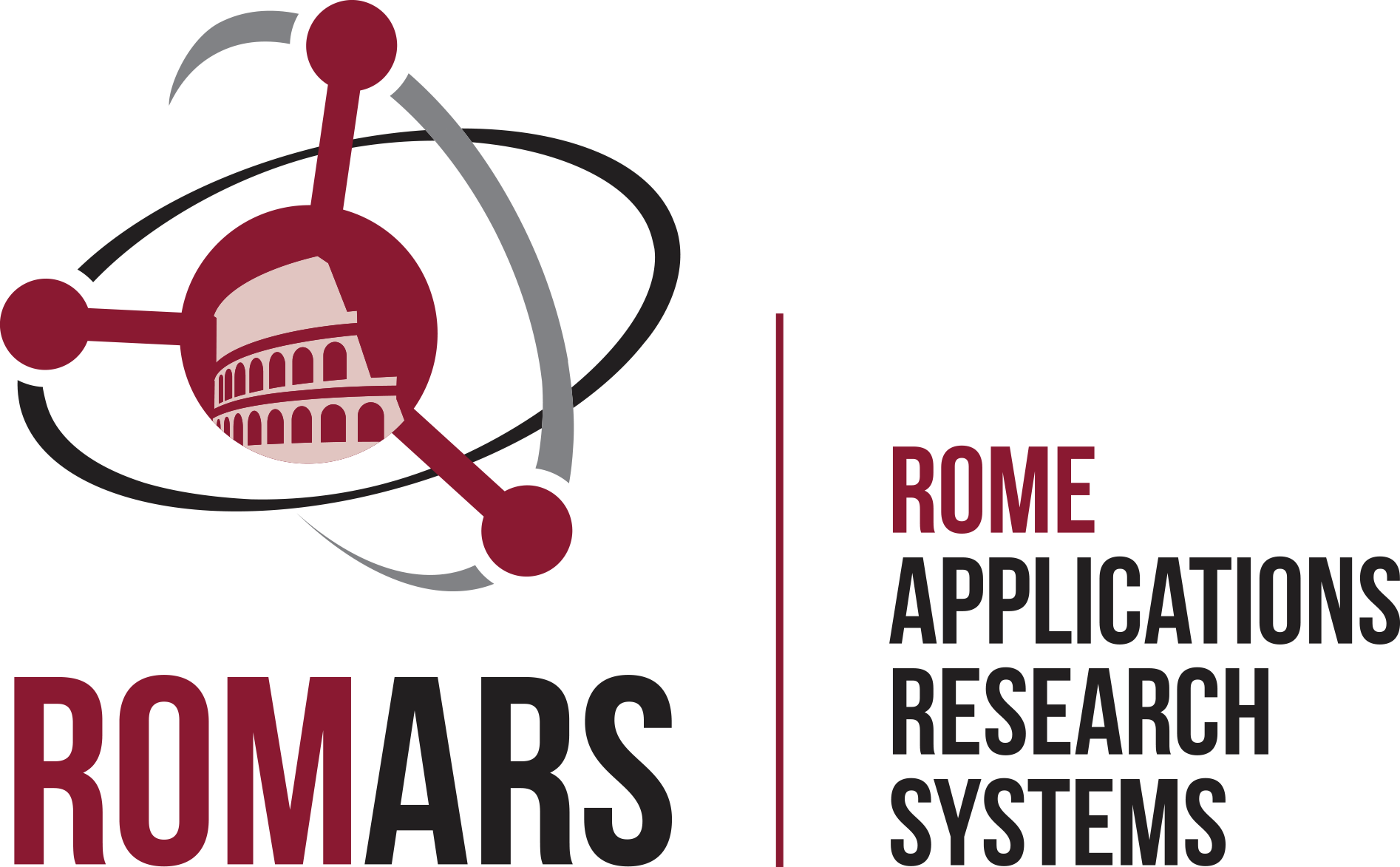
-
StatusOngoing
-
Status date2023-12-04
-
Activity Code2-.019
5G-HOSTS-SAT focuses on experimental validation of various vertical services in 5G environments enhanced with satellite technologies. The final aim is to identify business drivers, technical challenges and practical solutions to foster and facilitate the creation of new applications in sectors that particularly benefit from the integration of satellite in 5G networks.
This is achieved through three objectives:
-
The creation of a multi-site testbed and validation framework for test, troubleshooting, and performance evaluation of vertical applications in satellite-enabled 5G networks. The latest 5G technologies in 5G RAN and core are enhanced with innovative features for orchestration, monitoring, AI-driven automation and programmable satellite networks, combined with edge/cloud for distributed applications. Standard architectures and open interfaces allow to replicate realistic operational environments and build customizable scenarios.
-
The enhancement of concrete vertical applications in various business sectors to exploit the new features offered by 5G-SatCom integration.
-
The direct involvement of vertical industries in extensive OTA field trials, with network and infrastructure KPI monitoring, service performance evaluation and application tuning. The first phase involves verticals from smart agriculture and PPDR sectors, in collaborations with Civil Protection of Friuli Venezia Giulia. The second phase is extended to smart livestock management, media broadcasting, and Transport and Logistic.
5G-HOSTS-SAT challenges are related to the creation of a flexible, modular and highly customizable experimental environment integrating 5G-SatCom technologies with a set of monitoring, orchestration and testing tools to facilitate trials in several vertical sectors. Application developers and service providers need a friendly platform which automates the configuration of the testing environment, hiding the complexity of 5G, satellite, and edge/cloud resources. Test execution, troubleshooting and results analysis must be facilitated with tools to correlate network KPIs, computing and service metrics and perform automatic diagnostic. The trial environments should guarantee the service capabilities and QoS performance of realistic and operational infrastructures, while offering open interfaces to test innovative solutions for joint orchestration of 5G-SatCom networks and vertical applications.
The 5G-HOSTS-SAT project delivers three products:
-
A 5G-SatCom testbed for OTA trials of vertical services, with a configurable and programmable platform for service and network orchestration, monitoring and SDN control, extended to the hybrid satellite/terrestrial backhaul. The solution integrates service-aware network orchestration for end-to-end network slicing, resource orchestration in cloud/edge continuum, and traffic steering with per-flow granularity.
-
Mission Critical (MC) applications for PPDR services, optimized for on-demand and reliable deployments in remote or disaster areas difficult to reach, with automatic configuration of satellite connectivity. Key benefits are QoS guarantees for traffic of various MC applications, user prioritization, slice isolation, and pre-emption to support high-priority traffic on custom network slices.
-
A smart agriculture application for precision irrigation, empowering IoT sensors and actuators connected via 5G network and self-calibration ML techniques. The solution guarantees more efficient irrigation scheduling reducing water and energy consumption.
The 5G-HOSTS-SAT testbed integrates a programmable 5G hybrid backhaul that can be configured to switch automatically between terrestrial and satellite links on per-flow and per-slice basis. This is enabled through the STARFISH platform, which exposes open interfaces for monitoring and on-demand configuration of satellite connectivity. The service and network orchestrator allows to jointly allocate computing resources for distributed applications in the edge/cloud continuum and manage the provisioning of dedicated end-to-end network slices in multi-domain scenarios. At runtime, Artificial Intelligence and Machine Learning (AI/ML) techniques implement the closed-loop automation logic that drives the traffic steering between terrestrial and satellite links, according to real-time network monitoring data, application load and service demands. The light-weight service-driven local orchestration in private 5G bubbles allows the dynamic deployment of fully autonomous 5G networks and edge/extreme-edge applications over portable devices, fundamental for PPDR scenarios. The combined usage of edge and cloud resources enables the adoption of distributed AI techniques in the smart agriculture sector for more efficient irrigation control, further facilitated by the satellite coverage that allows to reach large or fragmented crop systems minimizing the CAPEX.
The 5G-HOSTS-SAT testbed on field hosts a local 5G network, e.g., a Non-Public Network, equipped with edge computing resources to run local applications. A programmable hybrid terrestrial/satellite backhaul, provides the transport connectivity to the “core” elements of the 5G Core Network, enabling access to Internet and cloud services. The adoption of cloud native functions allows to split the 5G CN between edge and core domains depending on use case requirements. Fully autonomous 5G networks for PPDR deploy user and control plane components at the edge, with temporary satellite backhaul connectivity established on demand for periodical synchronization with the control centre. Distributed services with applications executed partially in the cloud maintain only a local UPF at the edge, while the rest is deployed on the core side, with a continuous backhaul connectivity.
Using SDN techniques and backhaul programmability, the traffic is dynamically steered through terrestrial or satellite link, following per-slice or per-flow criteria. Moreover, through the STARFISH platform it is possible to adjust the satellite connectivity depending on the service requirements. This is handled through the integration between SDN controller and orchestrator logic, in order to take joint decisions that combine service and networking aspects in an end-to-end manner.
The first 5G-HOSTS-SAT phase has a workplan structured in four milestones. The baseline design (6 months) includes use cases, architecture and technical requirements definition, with MVP specification for smart agriculture and PPDR services. This is followed by design and implementation of 5G-HOSTS-SAT testbeds, planned for the CDR (month 11). The implementation of two vertical solutions with OTA field trials setup leads to the PPR at month 16. The final step covers field trials execution, results analysis and development roadmap definition, with final review at month 21. The second phase brings additional verticals in PPDR, media, transport and logistic.

The project has currently defined the use cases for PPDR and smart agriculture services, deriving the technical requirements of the system and the network KPIs. Moreover, the first design of the system architecture is ready, in order to feed the definition of the MVPs and the testbed specification, planned in the next months.







